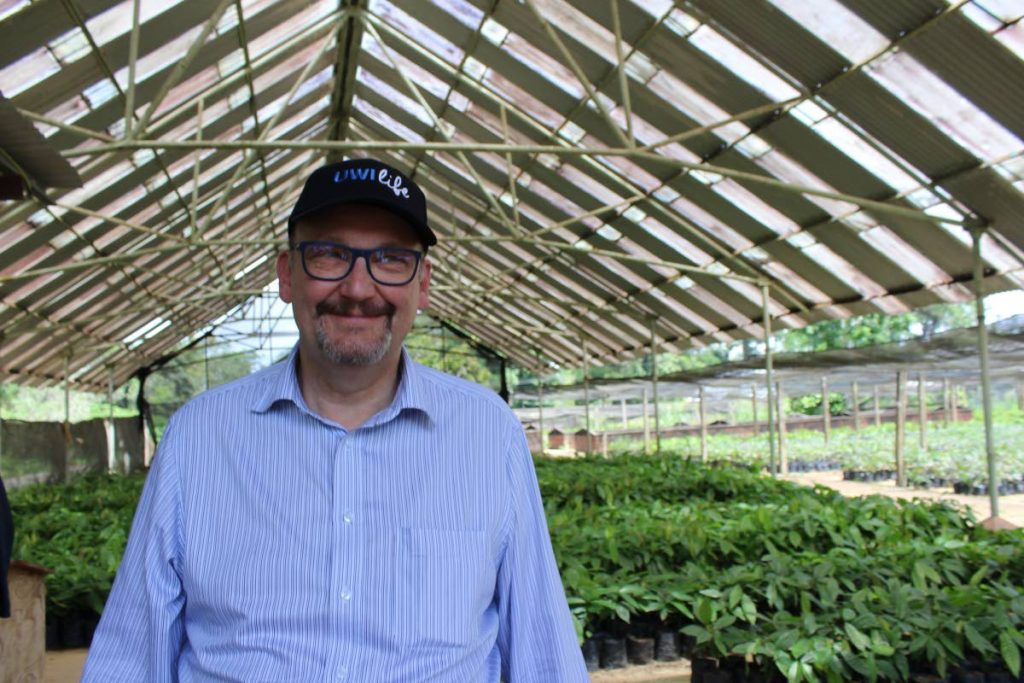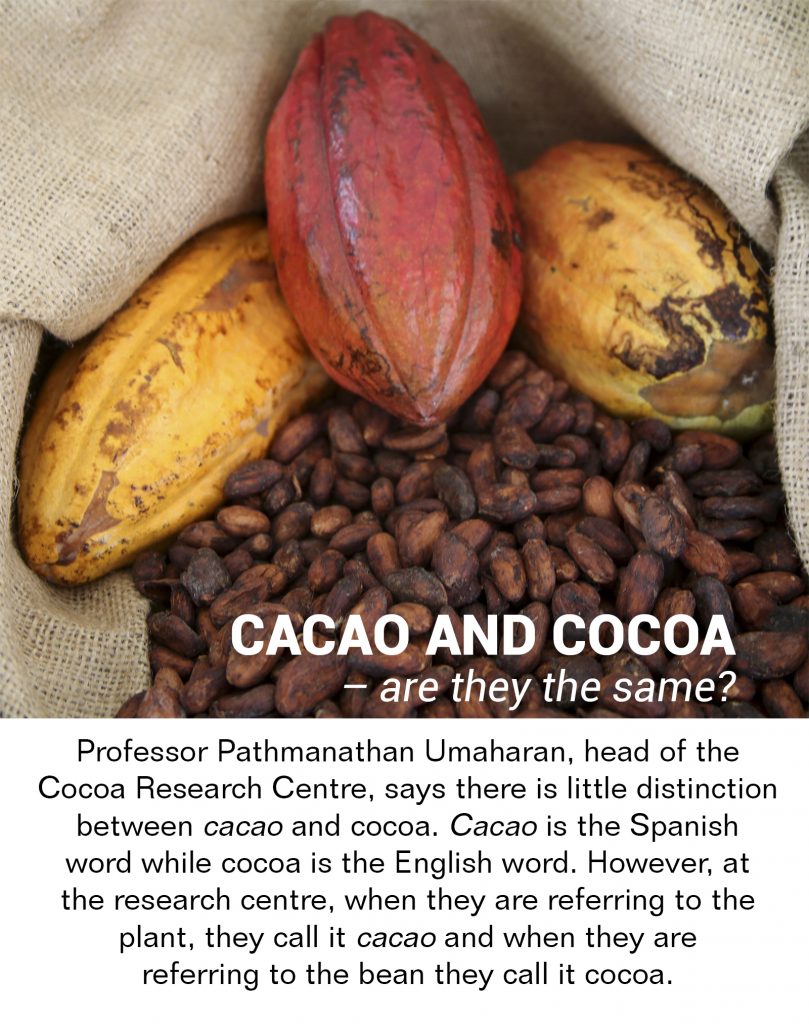Cacao of excellence

The International Cocoa Organisation (ICCO), headquartered in Cote d’Ivoire, is the world’s foremost chocolate body, comprising both cocoa-producing and cocoa-consuming member countries. It was founded in 1973 to put into effect the first International Cocoa Agreement, negotiated at in Geneva at the UN International Cocoa Conference.
Business Day caught up with the organisation’s new executive director Michele Arrion at the La Reunion Estate in Centeno during his first tour of the Caribbean, as he visits all of the ICCO’s member countries.
He spoke about the potential he sees in the TT industry, as well as challenges and opportunities in the international market for cocoa, especially fine-flavour (exceptional quality and taste) cocoa.
Welcome to Trinidad. How has it been so far?
Great! It’s my first trip to the Caribbean and I was appointed executive director of the ICCO six months ago. I’m travelling to visit members, and TT is a very interesting destination because of the history of the destination – it is the fatherland of the trinitario, and also what is very interesting for me is to visit the gene bank. TT is in charge of this international venture and keeping (watch) over conservation of the genotypes of cacao trees.
It is important in the framework (in the context of) the general decline in prices, where I think the way to improve prices in particular for farmers and small producers is to improve quality. In TT, you have some of the best quality in the world, so I think for our other members it is important to draw lessons from TT in what the country is doing in terms of quality and development of fine-flavour. We have a market based on commodity price and standard quality, but we also have a niche market of cacao of fine-flavour – cacao of excellence – and our organisation is trying to develop this segment of the market for fine cocoa and producing fine chocolate, while also responding to the demand in the traditional market.
The consumers in the international markets, in Japan and the European Union they want to know better what they are eating, they want excellent quality, they want a traceable value train.
So what I’m saying for cocoa is the same for other cash crops like coffee and bananas. Consumers want a fair price being paid to the farmer, so this research and search for quality and traceability is really the core of my visit to Trinidad.
What have you seen in Trinidad so far, especially related to all the elements you’ve just said?
We have visited the genebank. I was expecting a kind of laboratory with small pieces of material from cocoa, but actually I discovered it was a living genebank. So you can see trees, not only from Trinidad but also the Amazonian regions, from Peru, Ecuador, other origins. It was very impressive to see the cocoa. Scientists have identified ten different basic genetic types of cocoa and six of them are represented here in Trinidad.
Being ourselves a global organisation, we have other members also keeping some gene banks on other continents, in Indonesia and Ghana, for example, you have research centres and I think international co-operation and exchanges would be very good.
But what we have seen here also is a nursery producing seedlings and grafted small trees for the farmers, so the propagation (of plants). Because it is good to have scientists developing certain genes, but it’s better to translate that into material to be used by the farmers. It’s quite interesting.
What do you think of the industry in TT? How can it be improved?
That we discussed with the (Cocoa Development Company). Indeed, also globally speaking, we are seeing a lot of local transformations beyond the first step of processing the beans. You have the entire transformation of semi-finished product, but also in chocolate.
We have seen that there are in TT micro-enterprises producing local chocolates, which we think is very good because of the added value that is created, like job and it diversifies the industrial bases of the country and it’s also a way to respond to the needs of the tourists, because the tourism industry is very important to Trinidad and the Caribbean in general. And well, to sell products to tourists you have to transform. You have to produce.
What are the guiding standards for cocoa?
There is indeed a small segment of the market called fine-flavour cocoa, representing abut five per cent of the market, but if you produce fine-flavour cocoa, you can get a price for your product that can be three, four, five times the price of the international market.
There are no globally agreed criteria or standards to determine what is fine-flavour. It is more a question of experts to identify beans that have specific organoleptic properties – you can identify with your nose, and tasting or just sniffing the aroma of the beans, the quality which can really present a fantastic flavour to the consumer. It’s very subjective, but if you put ten experts on the same panel they will very often all agree and concur on the good quality of the beans.
Trinidad is absolutely a country where you have 100 per cent of fine-flavour, which is quite an achievement.
Tell me about the global market for cocoa.
We do indeed have a global concern where the international price remains extremely low. The price is US$2,400 free on board per tonne, or up to a quarter of the price Trinidad can achieve, but it does concern 80 to 90 per cent of the global production.
Why are prices so low?
Partly because there is a constant growth of production that doesn’t match an equivalent growth of consumption, so the traditional markets for consumption – Europe, North America – are more or less saturated. The consumption does not increase because the demographics don’t increase.
We are looking at new markets as an organisation. The biggest markets are Asia, with the two biggest countries being China and India, but also countries of origin, like the Caribbean, Latin America and West Africa, where there is great potential, where people are not consuming cocoa products and we believe that potentially, the consumers, even if they are poor, can afford to pay the price for cocoa powder or the incorporation of cocoa products into foodstuffs.
For fine-flavour cocoa there’s a different market, because you have to be rich to pay for fine cocoa made into fine chocolates, so that’s typically a market in Japan, in Europe and America, and we see the development of fine cocoa within the global consumption in chocolate. It’s very linked to the new requirements of consumers in terms of organic food and niche, high-end products.
So the consumers in these countries are willing to pay more for a product of better quality, and more traceable, where the consumer can be assured that no tropical forest has been destroyed, no child has been used in the plantation to produce cocoa.
And finally, what about the impact of climate change?
I wish I knew. But of course (we see trends).
Climate change is having an impact on cocoa. It has an impact on the rains, and cocoa trees, they need humidity and rain and they need heat, so if the climate is warming up and we have less rain because we have less forests (there can be some impact).
I’m not saying we will have less cocoa, but the places cocoa is grown may change. So some countries may see production decrease, while others may see new areas that can accommodate more cocoa plantations.
(Responses have been edited for clarity and content.)



Comments
"Cacao of excellence"